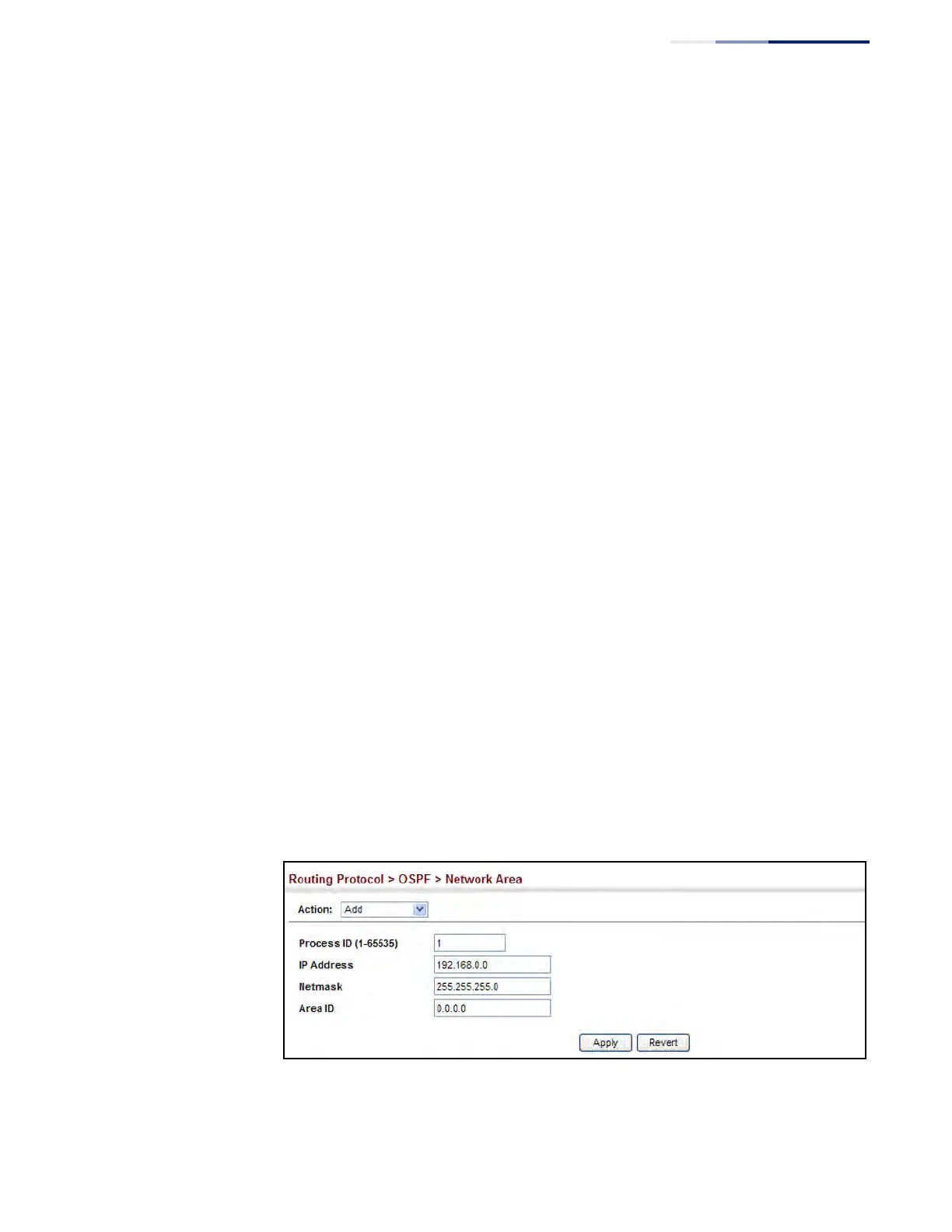Chapter 19
| Unicast Routing
Configuring the Open Shortest Path First Protocol (Version 2)
– 719 –
◆ If an address range overlaps other network areas, the router will use the
network area with the address range that most closely matches the interface
address. Also, note that if a more specific address range is removed from an
area, the interface belonging to that range may still remain active if a less
specific address range covering that area has been specified.
Parameters
These parameters are displayed:
◆ Process ID – Protocol identifier used to distinguish between multiple routing
instances. (Range: 1-65535)
◆ IP Address – Address of the interfaces to add to the area.
◆ Netmask – Network mask of the address range to add to the area.
◆ Area ID – Area to which the specified address or range is assigned. An OSPF
area identifies a group of routers that share common routing information. The
area ID can be in the form of an IPv4 address, or as a four octet unsigned integer
ranging from 0-4294967295.
Set the area ID to the same value for all routers on a network segment using the
network mask to add one or more interfaces to an area.
Web Interface
To define an OSPF area and the interfaces that operate within this area:
1. Click Routing Protocol, OSPF, Network Area.
2. Select Add from the Action list.
3. Configure a backbone area that is contiguous with all the other areas in the
network, and configure an area for all of the other OSPF interfaces.
4. Click Apply
Figure 484: Defining OSPF Network Areas Based on Addresses

